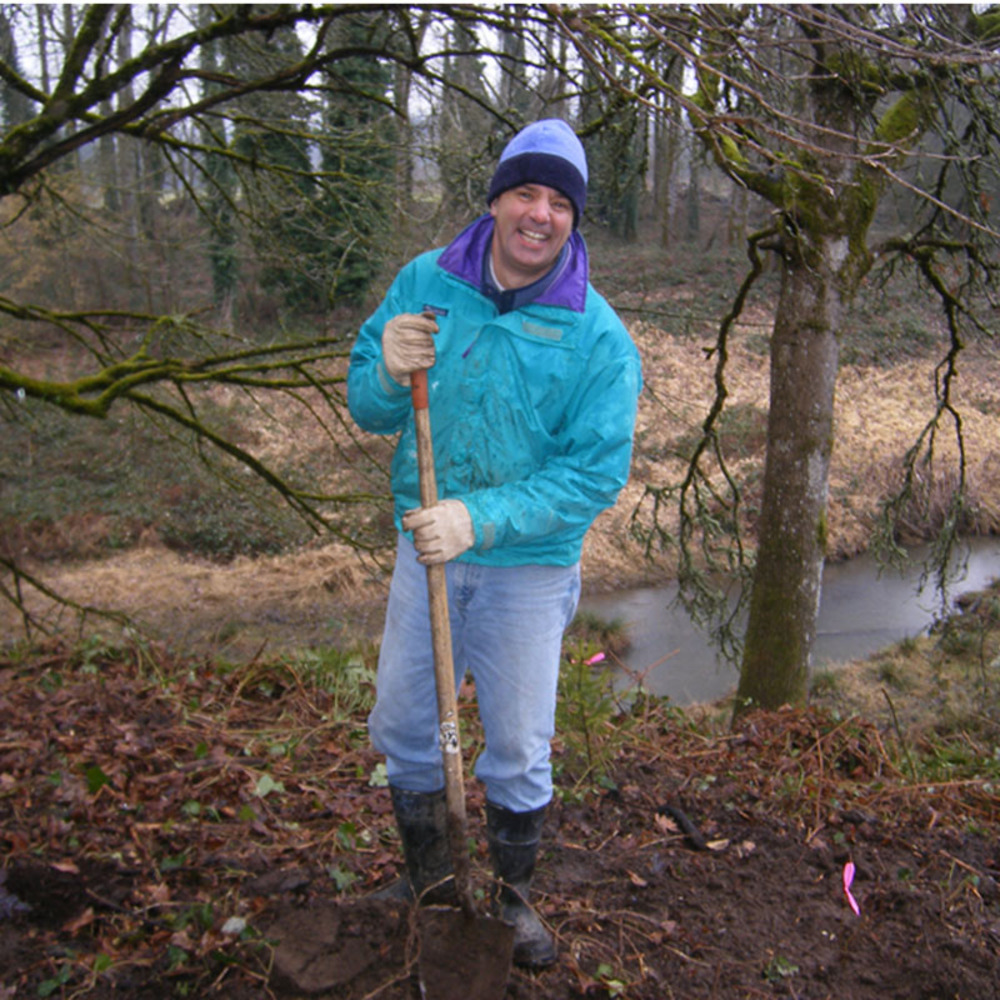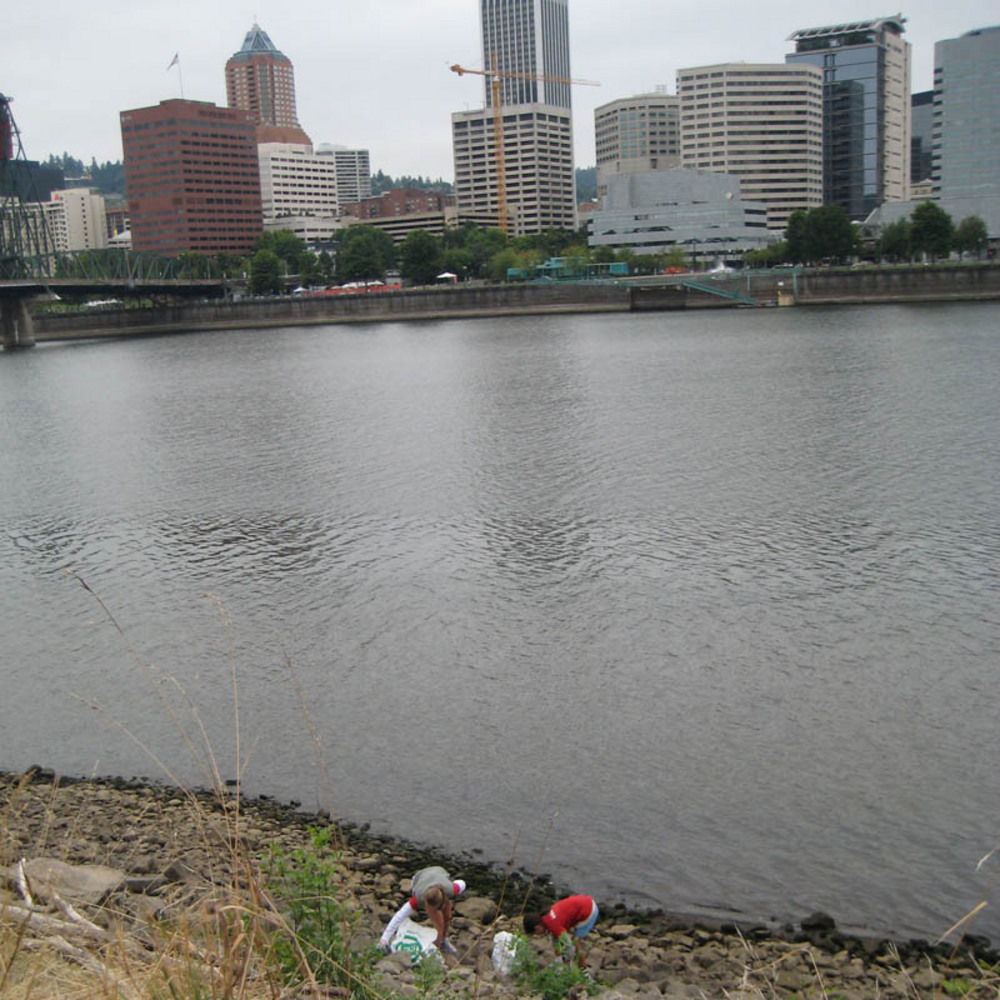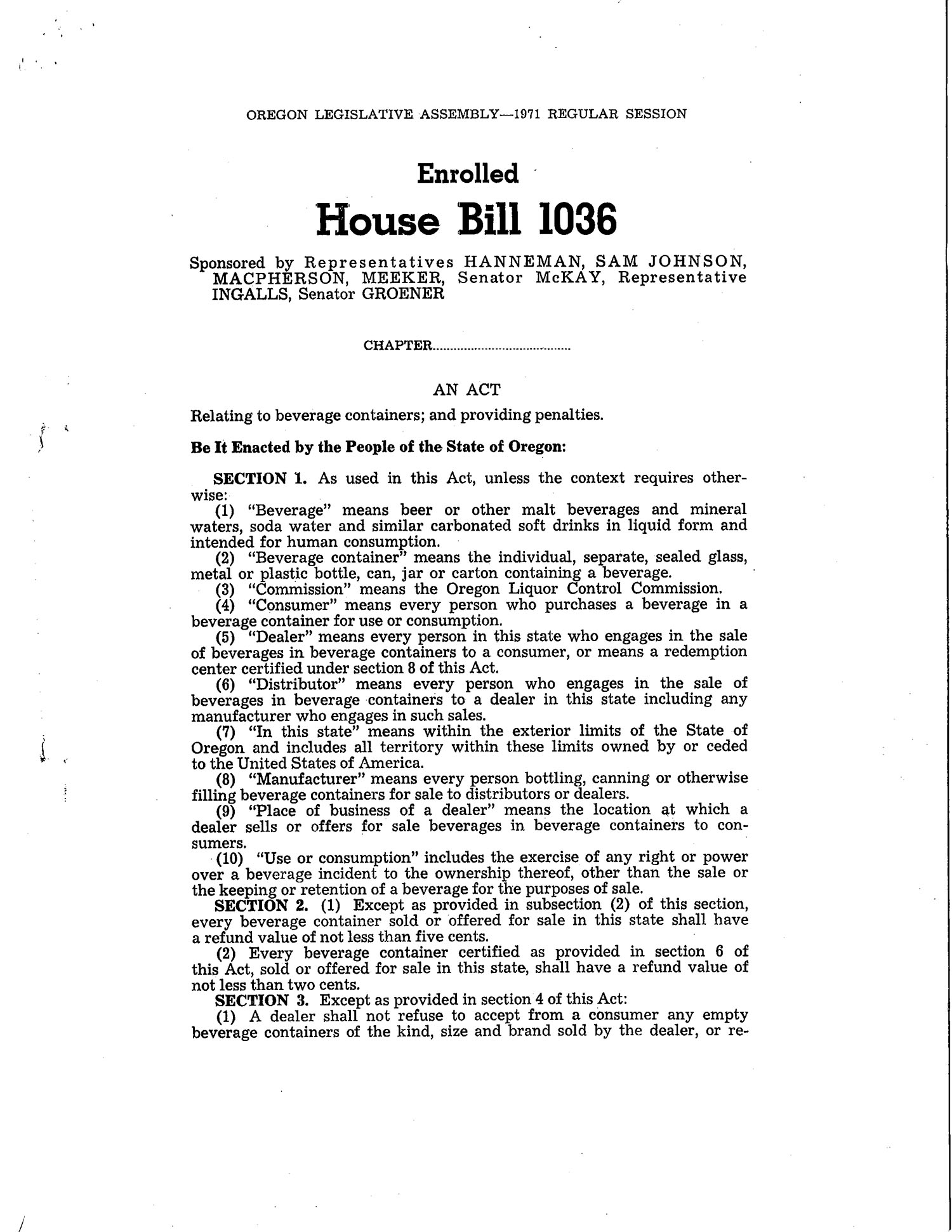Since its founding in 1969, SOLVE (formerly SOLV) has worked to clean up litter in Oregon. In recent years, the nonprofit group has expanded its mandate to include broader community and environmental goals. To better reflect that change, SOLVE dropped the words “Stop Oregon Litter and Vandalism” from its name in 1998 and just used the acronym SOLV, until 2012 when it became SOLVE.
SOLVE had a controversial start, formed as a compromise in a heated political battle over a growing can and bottle litter problem in Oregon, and questions about who was responsible for the litter and how to fix it. In 1969, state lawmakers considered a law that would add a redeemable five-cent deposit to the sale of beverages in bottles and cans. Industries associated with the making and selling of beverages and containers opposed the bottle bill, as it came to be known, and it was narrowly rejected. Biographer Brent Walth contends that Governor Tom McCall did not support the first bottle bill, planning instead to persuade the industry to support the creation of a state anti-litter organization, SOLVE.
In 1971, while the legislature debated a new bottle bill (which passed), newspapers reported that the beverage and bottling industries had provided SOLVE with nearly seventy-five percent of its budget. The publicity caused the fledgling nonprofit to lose credibility with conservationists. Despite this inauspicious start, SOLVE eventually overcame its negative associations with bottle bill opponents, and its leaders later supported efforts to expand the bottle bill.
SOLVE’s early work was primarily promotional. Operating with funding largely from the Oregon Department of Transportation, the group produced anti-litter campaigns, including education for schoolchildren, posters, television ads, and free garbage bags. SOLVE did little to stop vandalism, which proved to be a more difficult task. In 1977, in an effort to address the issue, SOLVE’s board funded an anti-vandalism television advertisement that was later pulled because viewers found it too negative. In 1992, SOLVE established a program to clean up graffiti in Portland, but since 2000 vandalism has not been a main focus of the organization.
SOLVE is best known for its twice-annual beach clean-ups, which began in the 1984. Alarmed by the dangers of plastics to wildlife, Oregon Department of Fish and Wildlife employee Judie Neilson Hanson organized the first state-wide beach cleanup, and SOLVE helped. That year, 2,100 volunteers collected 2,800 bags of trash. In 1986, Hanson coordinated beach clean-ups with similar efforts in fourteen coastal states. The following year, SOLVE took over leadership of the Oregon’s beach clean-ups, which have continued to be successful.
SOLVE has grown substantially since its founding, and its leaders have taken it in new directions. Until 1990, when Jack McGowan became the first paid director, the organization was completely run by volunteers; it now has twenty-six paid employees. SOLVE has started new programs to clean up illegal dumpsites, bus stops, and watersheds. It also coordinates a state-wide adopt-a-river campaign and has a program to foster youth leadership.
-
![SOLV volunteer plants trees at a restoration site, February 2009.]()
SOLV, tree planting center.
SOLV volunteer plants trees at a restoration site, February 2009. Photo by Andrea Curtis, Oreg. Dept. of Enviro. Quality, courtesy SOLV
-
![SOLV volunteers pull ivy from a park on Earth Day 2009.]()
SOLV, GabrielPkcr.
SOLV volunteers pull ivy from a park on Earth Day 2009. Photo by Jen Seamens, SW Watershed Resource Center, courtesy SOLV
-
![SOLV volunteers at First Annual Riverfest Willamette Cleanup along Portland's Eastbank Esplanade, August 2008.]()
SOLV, eastbank Willamette cleanup, 2008.
SOLV volunteers at First Annual Riverfest Willamette Cleanup along Portland's Eastbank Esplanade, August 2008. Photo by Anca Solberg, REI, courtesy SOLV
Related Entries
-
![Beverage Container Act (Bottle Bill)]()
Beverage Container Act (Bottle Bill)
The Oregon Beverage Container Act of 1971, popularly called the Bottle …
-
![Thomas William Lawson McCall (1913-1983)]()
Thomas William Lawson McCall (1913-1983)
Tom McCall, more than any leader of his era, shaped the identity of mod…
Related Historical Records
Map This on the Oregon History WayFinder
The Oregon History Wayfinder is an interactive map that identifies significant places, people, and events in Oregon history.
Further Reading
Walth, Brent. “No Deposit, No Return: Richard Chambers, Tom McCall, and the Oregon Bottle Bill.” Oregon Historical Quarterly 95 (1994): 278-99.
Walth, Brent. Fire at Edens Gate: Tom McCall and the Oregon Story. Portland: Oregon Historical Society, 1994.





